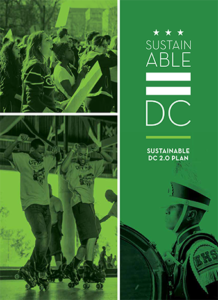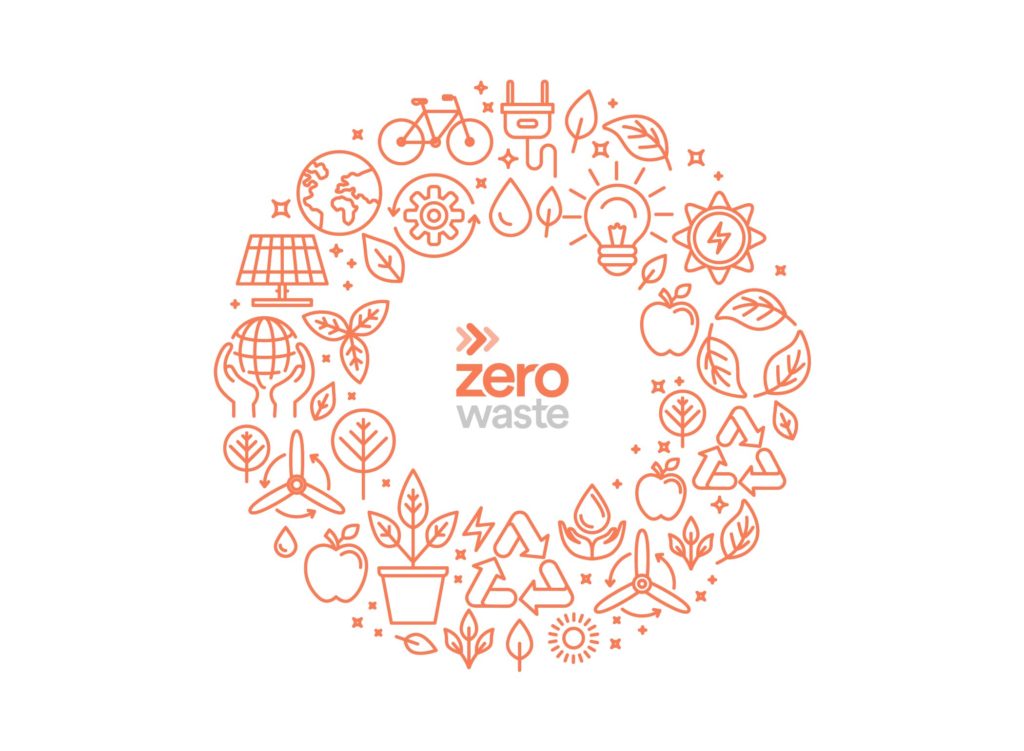 As the US looks towards the future, the nation’s waste generation is a cause for concern. The national picture as of 2018, according to the EPA, puts MSW generation at 292 million tons per year, with just 69.1 million tons recycled. Leaving aside composting and waste-to-energy figures, a staggering 146.1 million tons of waste went to landfill, and three years after the most recent EPA report, things aren’t looking much better.
As the US looks towards the future, the nation’s waste generation is a cause for concern. The national picture as of 2018, according to the EPA, puts MSW generation at 292 million tons per year, with just 69.1 million tons recycled. Leaving aside composting and waste-to-energy figures, a staggering 146.1 million tons of waste went to landfill, and three years after the most recent EPA report, things aren’t looking much better.
However, in recent years, some US cities and states have begun to take an organized and comprehensive approach to waste reduction and management. Today, zero-waste programs are spreading across the country, and they are kicking off a sustained effort to phase out waste entirely. This is not achieved by burning or sending to landfill, but rather through a process of reduced generation and systems developed to design waste out of the loop.
According to the EPA, zero waste has been defined in a number of ways. The concept has variously been described by the US Conference of Mayors as:
“Going beyond recycling and composting at the end of a product’s life cycle, to encompass the entire life cycle of a product, beginning with product design, and envisioning the use and management of materials in ways that preserve value, minimize environmental impacts, and conserve natural resources.”
“Zero waste can begin to shift the fiscal burden of waste and empower industry to embrace resource responsibility by rewarding stewardship through purchasing and economic development incentives.”
Further to this, the Zero Waste International Alliance (ZWIA) defines it as:
“The conservation of all resources by means of responsible production, consumption, reuse, and recovery of products, packaging, and materials without burning and with no discharges to land, water, or air that threaten the environment or human health.”
In general, ZWIA states that zero waste can be outlined by three guiding principles:
- Producer responsibility
- Political responsibility
- Community responsibility
Each city-based zero waste program in the US sets its own targets for achieving its goals based on a combination of these three principles. For Austin, Texas, this involves diverting 90% of waste from landfills and incinerators by 2040 and establishing benchmarks for waste reduction. For San Diego, plans were in place to divert 75% of its trash and capture 80% of its methane emissions from landfill by 2020, rising to 100% of trash in 2040.
But apart from the examples, which cities in the US have pledged to develop zero-waste municipality programs and what are their precise goals and interpretations of how this might work? Here, we look at how zero waste is spreading across the nation and what it means for the future of waste management on both the citizen and business levels.

Source: rts.com
New York
As one of the biggest cities in the world currently developing zero-waste goals, NYC is combining environmental plans with economic development. New York has committed to becoming a zero-waste city by 2030 under a plan called OneNYC, and has already implemented numerous initiatives across the city—with plenty more in the works.
The city’s zero-waste program focuses on organics collection, single-stream recycling, and pushing public housing and schools towards compliance with recycling laws. The city is also investigating textile and electronic recycling and has introduced initiatives such as the recent plastic bag ban across all five boroughs.

Source: boston.gov
Boston
Boston has slowly been working its way towards a zero-waste plan, and in 2018 its Advisory Committee recommended a broad range of strategies to reduce, reuse, recycle, and compost at least 80 to 90% of its solid waste. This forms part of a broader Climate Action Plan to become carbon-neutral and climate-ready by 2050.
This new approach to waste across the city has already seen initiatives such as Boston’s plastic bag ordinance, however, the final recommendations of the committee were only released at the end of 2019, so the city will need time to catch up with leading US cities, particularly in light of the COVID-19 pandemic and the issues surrounding it.

Source: phillymag.com
Philadelphia
Philadelphia’s approach to zero waste so far has introduced the Zero Waste Partnership program that hopes to engage local businesses and organizations to push towards zero commercial waste by 2035. Anyone who joins receives Gold, Silver, or Partner certification, depending on the level of transparency achieved.
In addition to this, the city has a broad goal of becoming zero waste in 2035, and the Zero Waste and Litter Cabinet is currently assessing what this means for the future, focusing on reducing food waste and recycling electronics among other things. Interestingly, according to a 2019 study, the city calculates its diversion rate with and without waste-to-energy programs—72% and 50.3% respectively. This is a particularly insightful metric as the ZWIA does not include waste-to-energy as part of the zero-waste plan.

Source: sustainable.dc.gov
Washington DC
DC has set the deadline of 2032 to achieve its zero-waste goals, including reducing food waste by 60%, reducing per-capita waste generation by 15%, and achieving 80% waste diversion from landfill from a baseline set in 2015. The goals form part of the Sustainable DC Plan, the district’s comprehensive strategy to improve the quality of life for residents while reducing environmental impact.
To date, Washington DC has seen waste diversion rates rise from 21% in 2015, to 25% in 2020, and other initiatives have mandated manufactures to implement greater producer responsibility. For example, paint electronics and paint manufacturers are now responsible for collecting, recycling, or safely disposing of their products. Additionally, Styrofoam containers have been banned since 2016, with retailers required to use recyclable or compostable containers.
 Seattle
Seattle
Seattle City Council adopted a Zero Waste Resolution in July 2007 and is making continued efforts to move towards a zero-waste city. The city has implemented an aggressive organics program, banning food waste across the city and implementing fines for noncompliance. However, this measure proved controversial due to the difficulty of enforcing such fines and was suspended.
Additionally, the mandatory recycling ordinance didn’t have much success, with a three-year phase out across single-family, multifamily, and commercial generators failing to be properly enforced. However, two publicly owned transfer stations are currently being upgraded and it’s hoped the city can get back on track.
 San Diego
San Diego
Despite its Californian location, a state renowned for being ahead of the curve for zero-waste programs in America, San Diego is one of the most recent cities to join the zero-waste movement. The aggressive new goals for the city have put it on course to match other programs in the US.
The approved plan has laid out a diversion rate goal of reaching 75% by 2020, 90% in 2035, and 100% within 25 years. In addition, the city has hosted a series of zero waste meetings to establish a plan to achieve these goals.
 San Francisco
San Francisco
San Francisco is a city that has been at the cutting edge in terms of zero waste for a while. In 2002, the city set a goal of 75% diversion by 2010 and zero waste by 2020. The city’s Mandatory Recycling and Composting Ordinance, passed in 2009, required all the city’s residents and businesses to separate recyclable materials, compostable materials, and landfilled trash.
San Francisco also succeeded in diverting nearly 80% of waste in 2012—the highest rate of any major city in the US. It continues to implement initiatives such as Zero Waste Climate Action Planning and the Zero Waste Textile Initiative, while also introducing plastic bag bans and other programs similar to that of other cities.
 Oakland
Oakland
Oakland adopted a zero-waste plan in 2006, and it has long been a leader in recycling and waste management. While the city had hopes of becoming a fully zero-waste city by 2020, there have been some issues with their strategy, including issues for restaurants dealing with big increases in composting rates and controversy surrounding the city’s solid waste services contract.
The overall goal of the scheme was to reduce waste in landfill by 90%, prioritizing waste prevention rather than recycling schemes. Additionally, popular initiatives such as plastic bag bans and moves to limit the use of single-use plastics are taking effect.
 Santa Monica
Santa Monica
The City of Santa Monica adopted its Zero Waste Strategic Operations Plan in 2014 with the goal of reaching 95% diversion from landfill by 2030. The Southern California city has created convenient ways for residents to separate organic waste from recyclables. These include programs to place composting bins at city facilities and efforts to improve services within multi-occupancy buildings.
The plan also holds various events, through its Resource Recovery & Recycling program, to help residents process hard-to-recycle products such as electronics and oil filters. Additionally, a regular repair café is held to help people repair goods rather than simply dispose of them.
 Dallas
Dallas
Dallas’ zero-waste program was initially described in its Local Solid Waste Management Plan 2011-2060, released in 2013. The goals were perhaps smaller in scale than in some other zero waste cities across the US. Dallas was aiming for a 40% diversion rate by 2020, a 60% rate by 2030 and zero waste by 2040.
In many circles, this was seen as a more achievable goal than other cities laying out much shorter timelines. However, this extended rollout is likely a reflection on the city’s lack of existing recycling infrastructure, with the city currently performing poorly across all types of recycling and waste diversion.
 Austin
Austin
In 2005, Austin signed the Urban Environmental Accords which committed the city to zero waste by 2040, and a recent study found that food waste represented about 20% of the waste stream going to landfill. As a result, as of 2016, food enterprise facilities larger than 15,000 square feet have been required to have an organics diversion program in place, rolling out to smaller establishments over time.
 Fort Collins
Fort Collins
It’s not just the bigger cities aiming for zero-waste status, smaller urban areas are also taking up the challenge. One such city is Fort Collins, Colorado. In 2013, the city announced a plan to achieve 75% diversion from landfill by 2020, 90% diversion by 2025, and zero waste by 2030. One of the key pillars of their strategy was a focus on food waste and the promotion of the Good Samaritan Act.
These cities are forging a path towards zero waste but there are many others that can take their cue from programs such as these. Large urban areas such as Chicago and New Jersey currently have no overarching zero-waste strategy in place, and despite introducing similar initiatives such as plastic bag bans, they could certainly benefit from a more comprehensive approach.
For more information on how you or your business can work towards zero waste, chat with one of our TRUE Advisors to get more insights on how you can optimize your waste management operations to ensure nothing goes to landfill.

